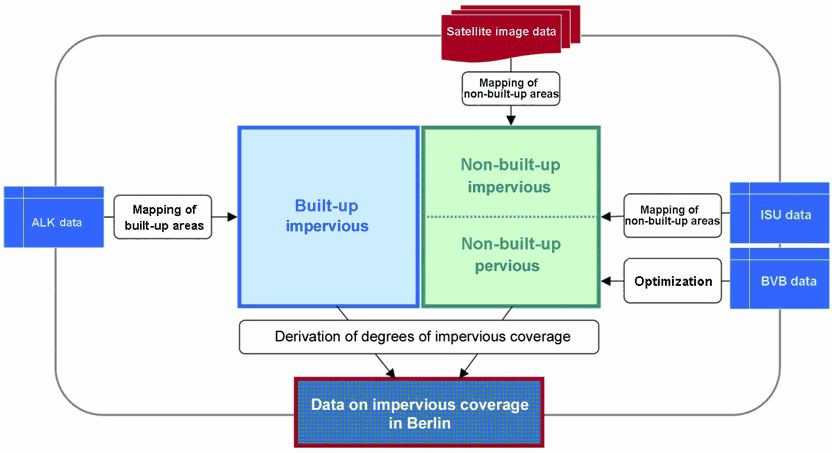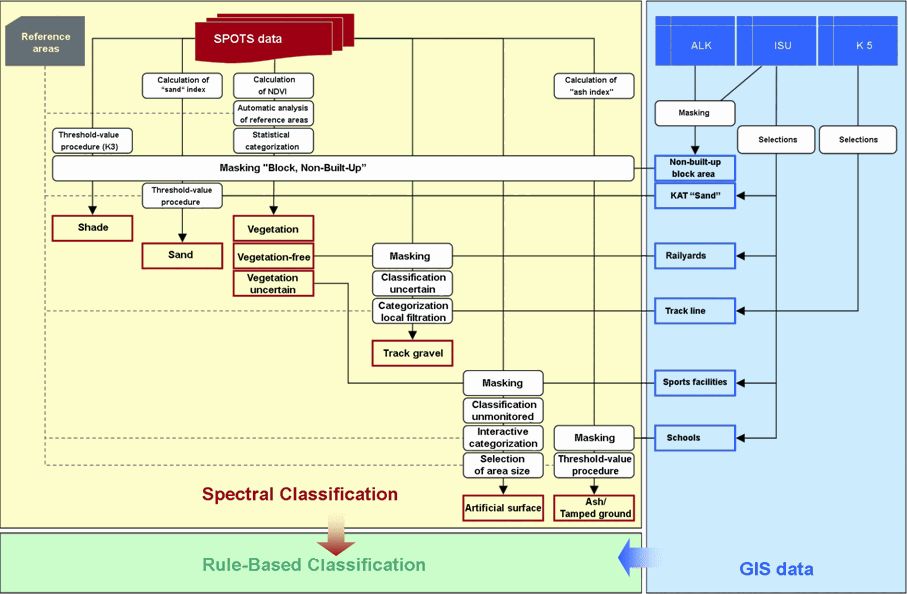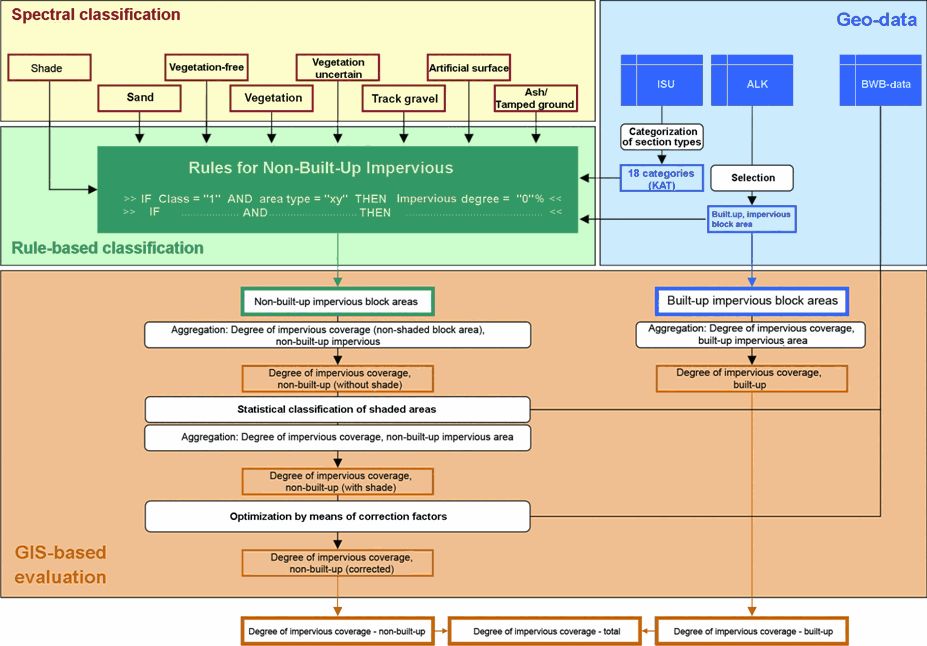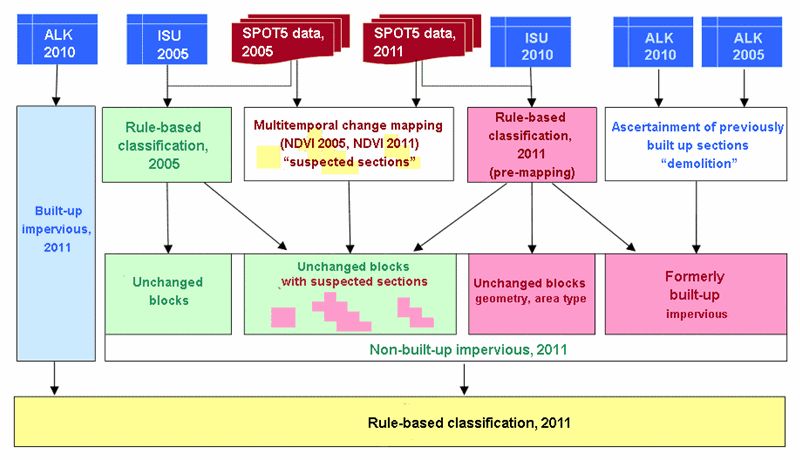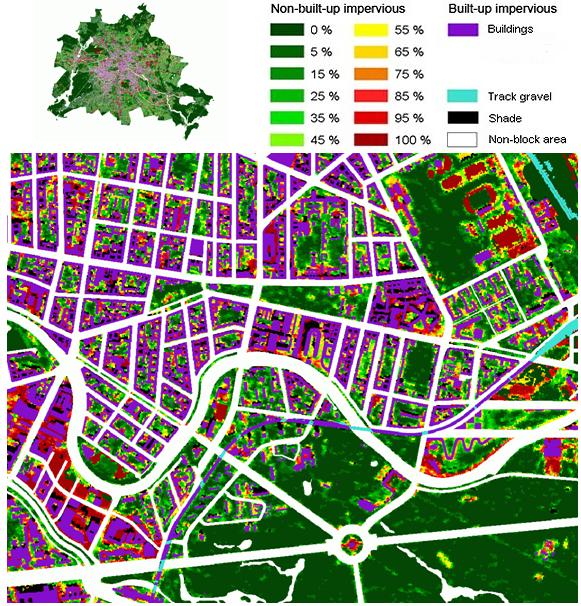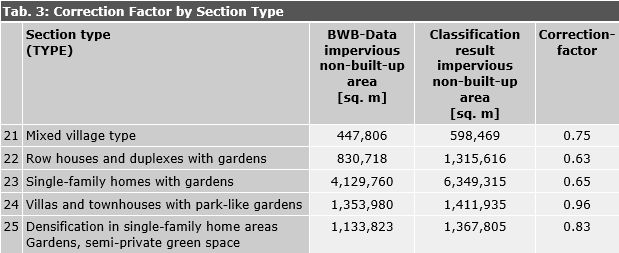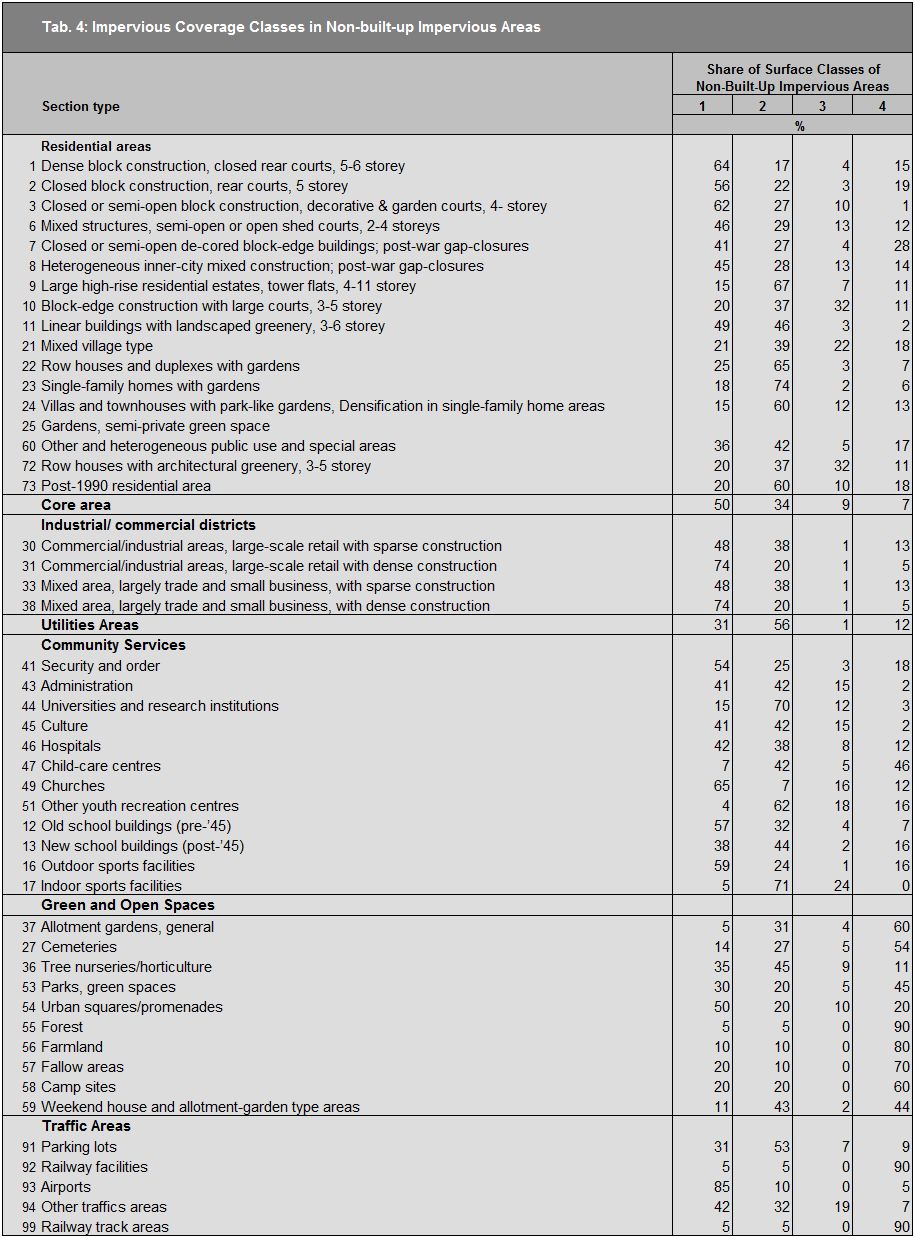Mapping of Built-up Impervious Sections
The delimitation of the built-up impervious sections was carried out exclusively on the basis of ALK data. Their integration into the mapping process constituted the first component of the hybrid method approach. For these sections, no evaluation has been carried out via satellite-image data.
With regard to the mapping precision of the built-up impervious sections, the familiar problems with regard to the topicality of ALK data must be considered. Particularly buildings on industrial and commercial areas, as well as urban rail stations, are frequently missed, partially or entirely. Due to a change in the definition of buildings, summer cottages in allotment garden areas are no longer included in the current ALK. The share of built-up impervious space in allotment garden areas therefore had to be calculated separately.
Mapping of Impervious Non-built-up Sections
For the mapping of the impervious non-built-up sections, a classification approach was used in which satellite-image data (SPOT5) and geo-data (ALK, ISU) were incorporated and combined. This procedure took into account the following criteria:
- Mapping of the entire municipal area
- Low expenditure of time and effort for the pre-processing of the satellite-image data
- use of geo-coded, system corrected data
- coverage of the municipal area with as few scenes as possible
- Low expenditure of time for the analysis of the satellite-image and geo-data
- Restriction of use of terrestrial photos, or controls to ensure they be kept to a minimum
- Flexible sensor and scene selection
- Realization of a high degree of automation
- Integration of the mapping results into the ISU.
The satellite-image evaluation consists of the following evaluation focuses.
Categorization of Section Types Relevant for Remote Sensing
To improve the mapping results, a categorization of ISU section types according to the remote-sensing-relevant criteria building height, vegetation height, reflection quality, heterogeneity and relief, as well as the average degrees of impervious coverage (2001) was carried out. This permitted spatially separate segment classification, and optimized choice of methodology. Eighteen categories were defined (Table 2), which had to be adapted to the new ISU section types of adopted in 2010.
Some adaptations have also affected the ascertainment of changes between 2005 and 2011, and required special consideration. In the course of the updating of ISU section types in 2010, uses were not only updated, but also corrected. In the course of the automated evaluation process, unchanged block sections were thus assigned to different impervious coverage categories (pseudo-changes). This involved 718 block sections. Major changes in ISU block geometry affected 244 block sections between 2005 and 2010, i.e., the section sizes had changed by more than 10 %. Here too, pseudo-changes in impervious coverage mapping could result.
Spectral Classification of Non-Built-Up Areas
The satellite-based remote-sensing data were further processed by means of a machine-based, automatic classification procedure. First, the degree of vegetation coverage of non-built-up areas was ascertained via the Normalized Differenced Vegetation Index (NDVI).
This index is based on the fact that healthy vegetation reflects relatively little radiation in the visible spectral range (wavelengths of approx. 400 to 700 nm), and relatively much more in the subsequent near-infrared range (wavelengths of approx. 700 to 1300 nm). In the near-infrared range, this reflection is strongly correlated with the vitality of a plant: the greater the vitality, the higher the increase of the reflection coefficient in this spectral range. Other surface materials, such as soil, rock or even dead vegetation, show no such distinctive difference in reflection coefficients for these two ranges. This fact can thus serve on the one hand to distinguish areas covered with vegetation from bare areas, and also to obtain information on photosynthetic activity, vitality and density of vegetation cover. This standardization yields a range of values between -1 and +1, where “an area containing a dense vegetation canopy” will tend to positive values (say 0.3 to 0.8)
(Wikipedia 2007).
Particularly relevant surface materials, such as sand, ash and tamped soil, railway-track gravel, artificial surfacing, as well as shaded areas, which are frequently evaluated faultily, must continue to be examined with special care.
Fig. 3 shows the spectral classification procedure, which consists of 6 partial evaluations.

